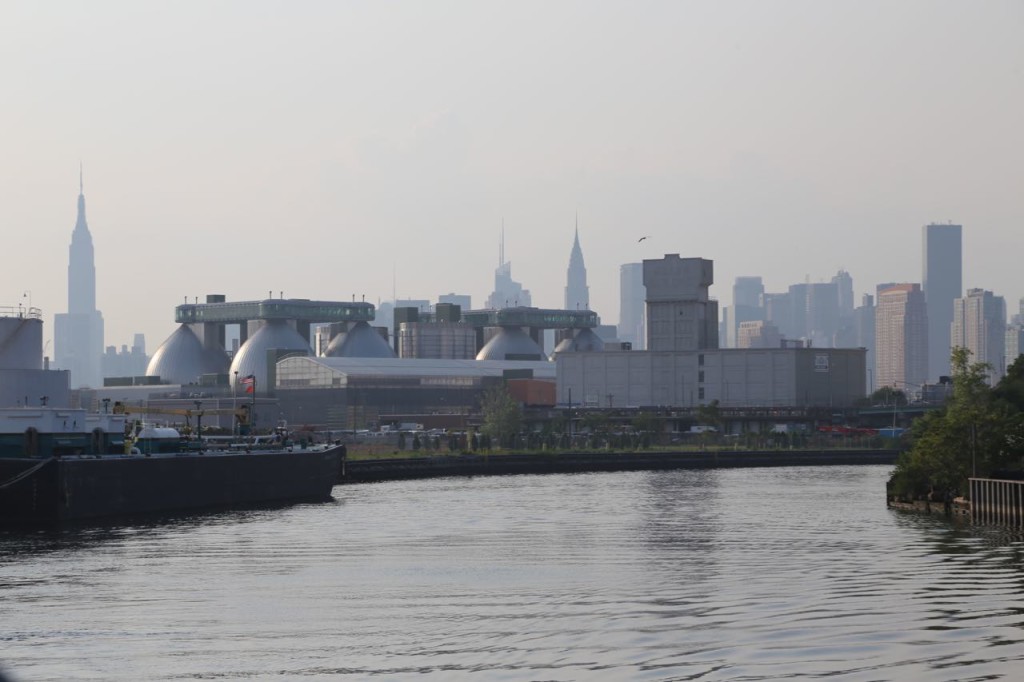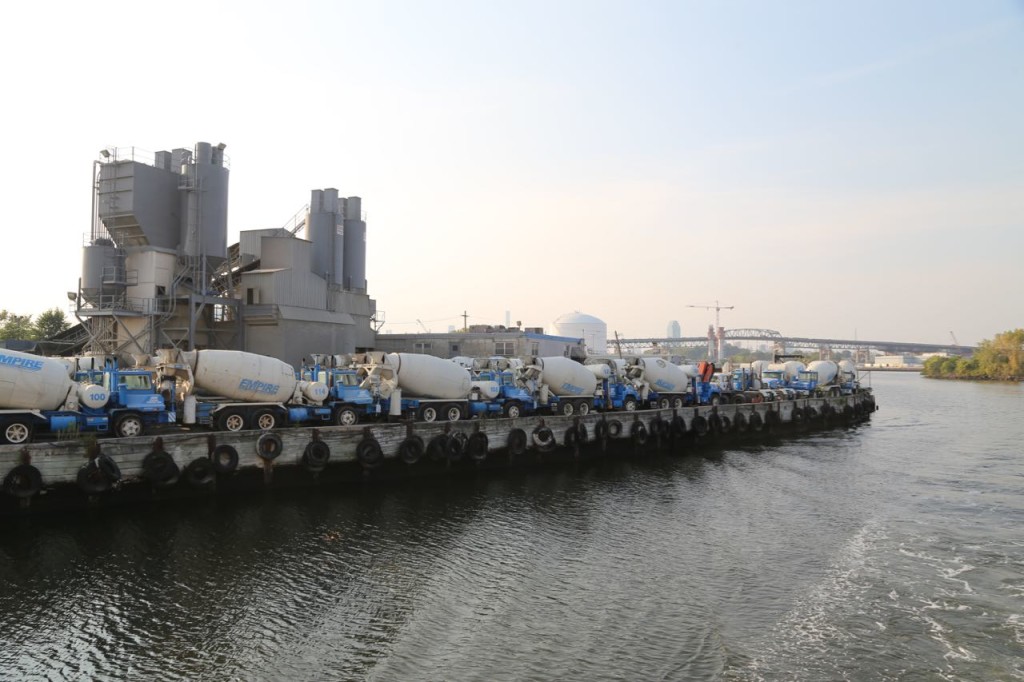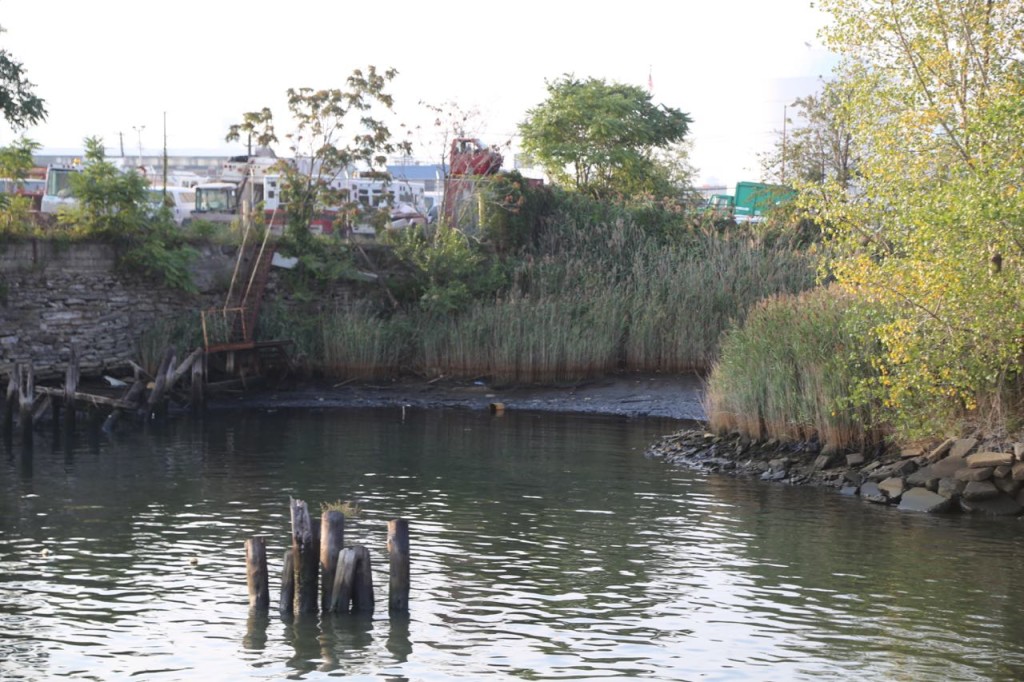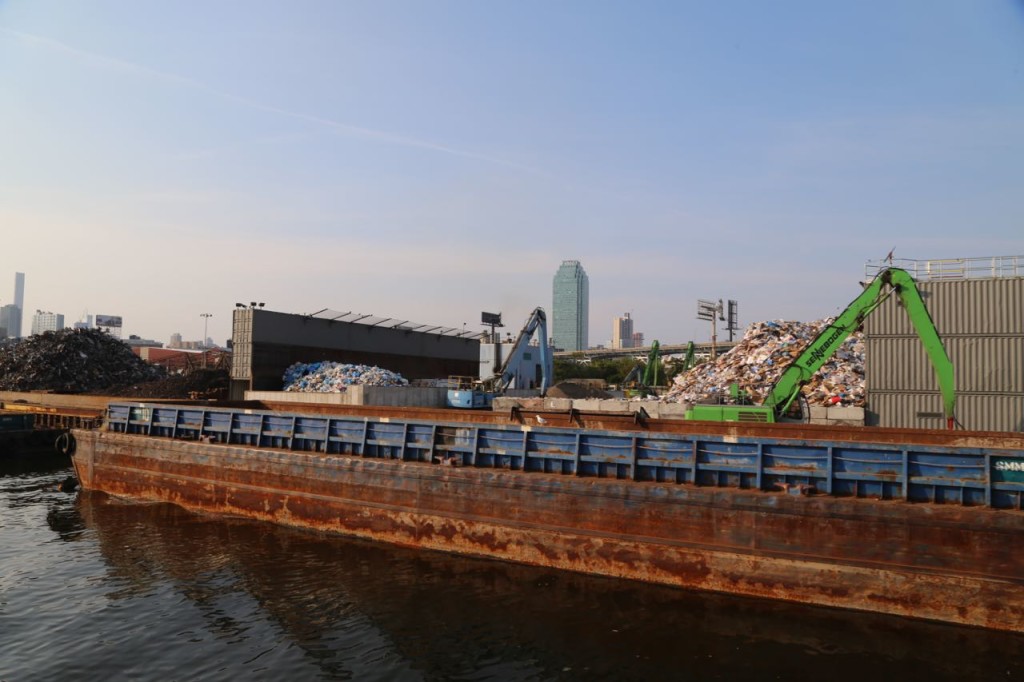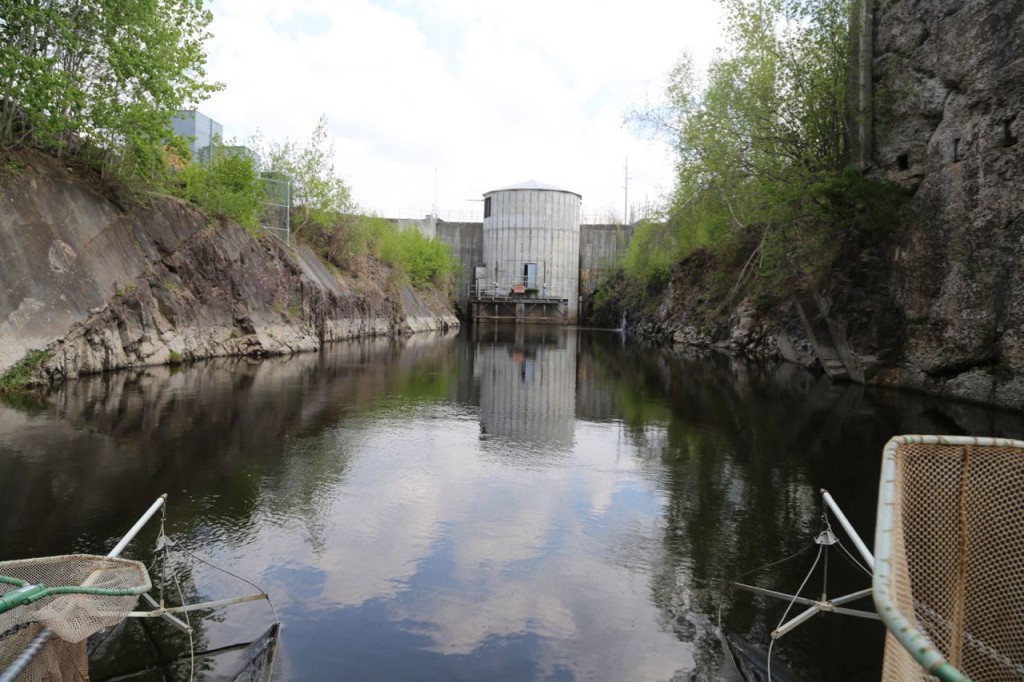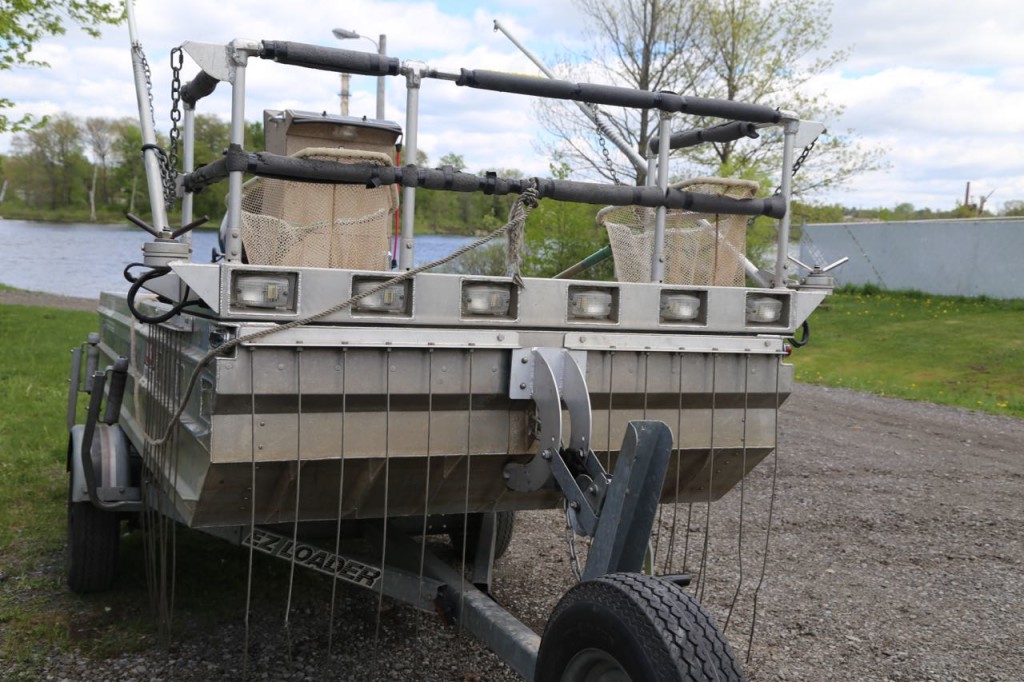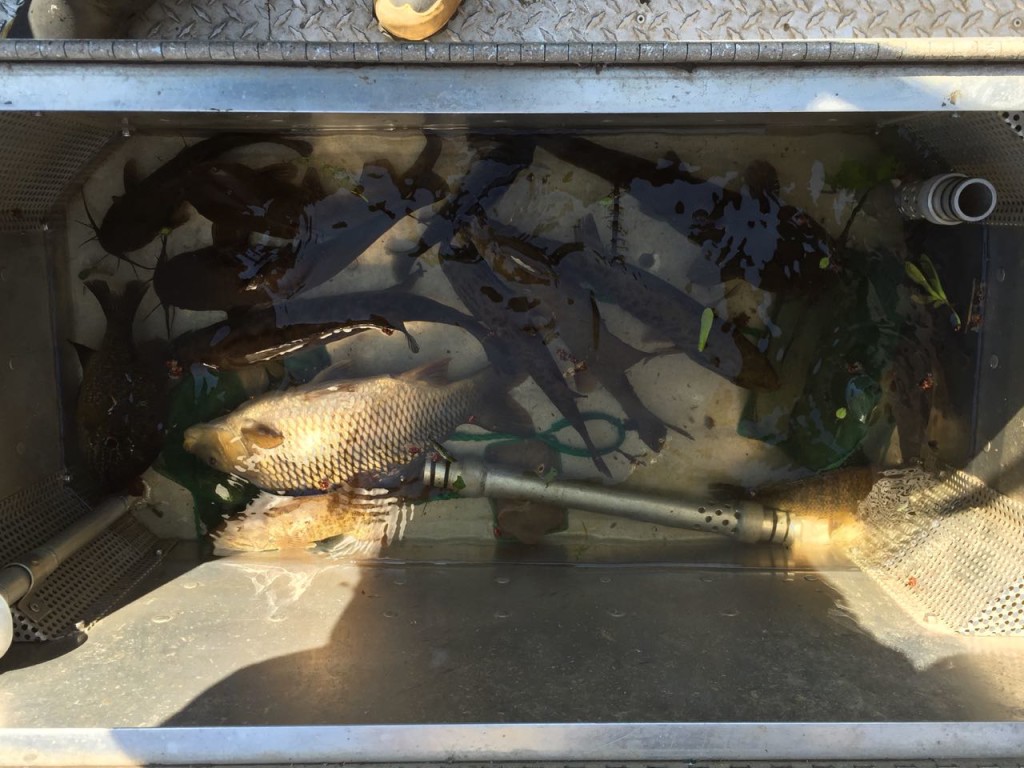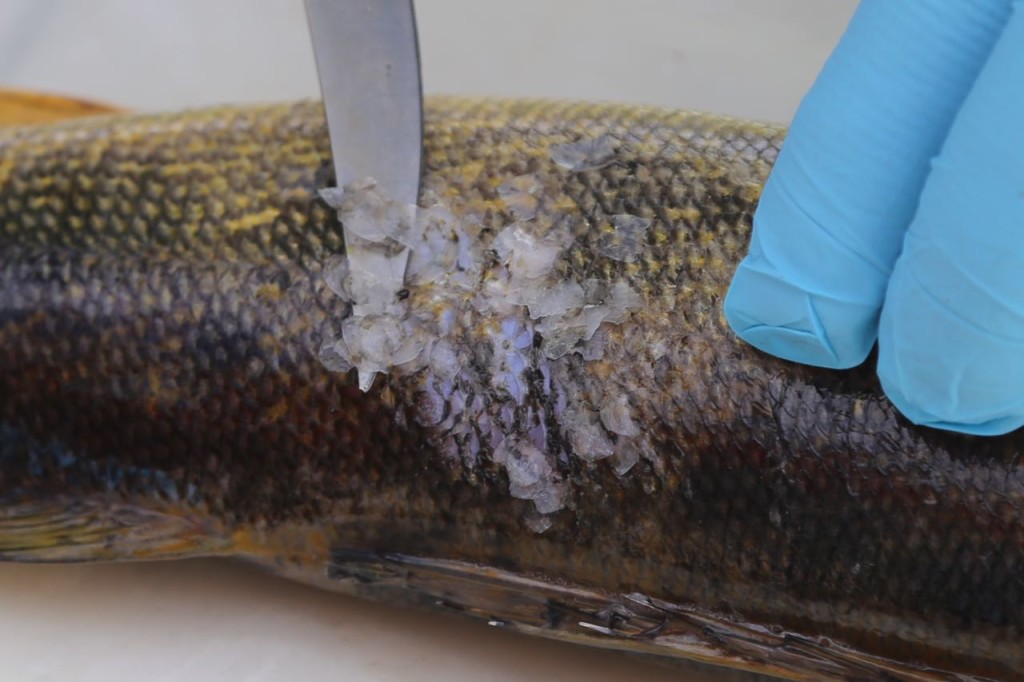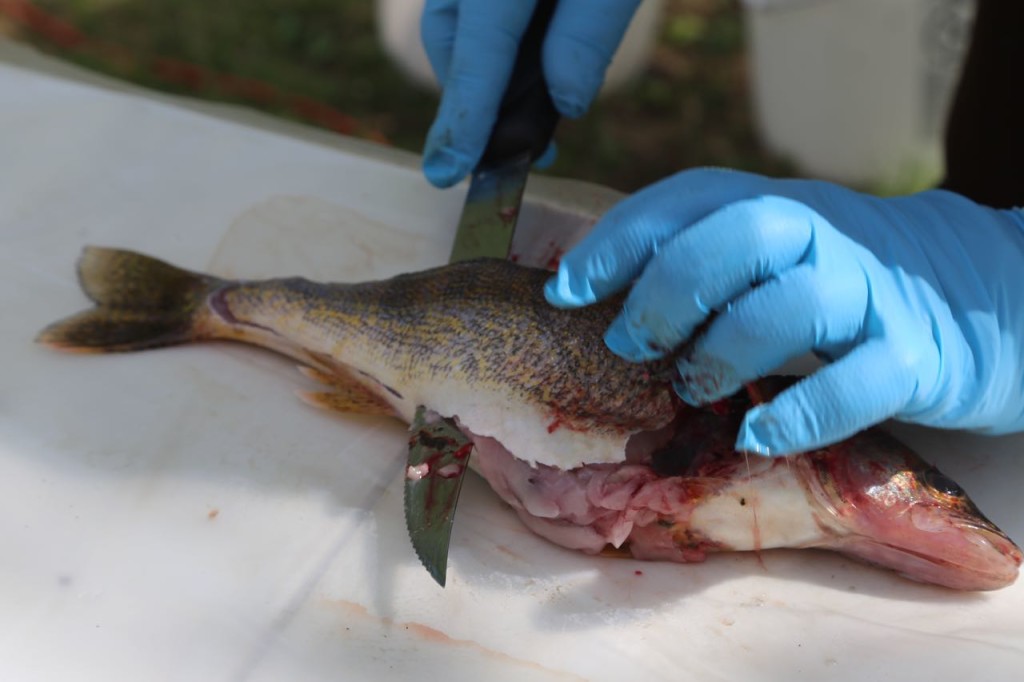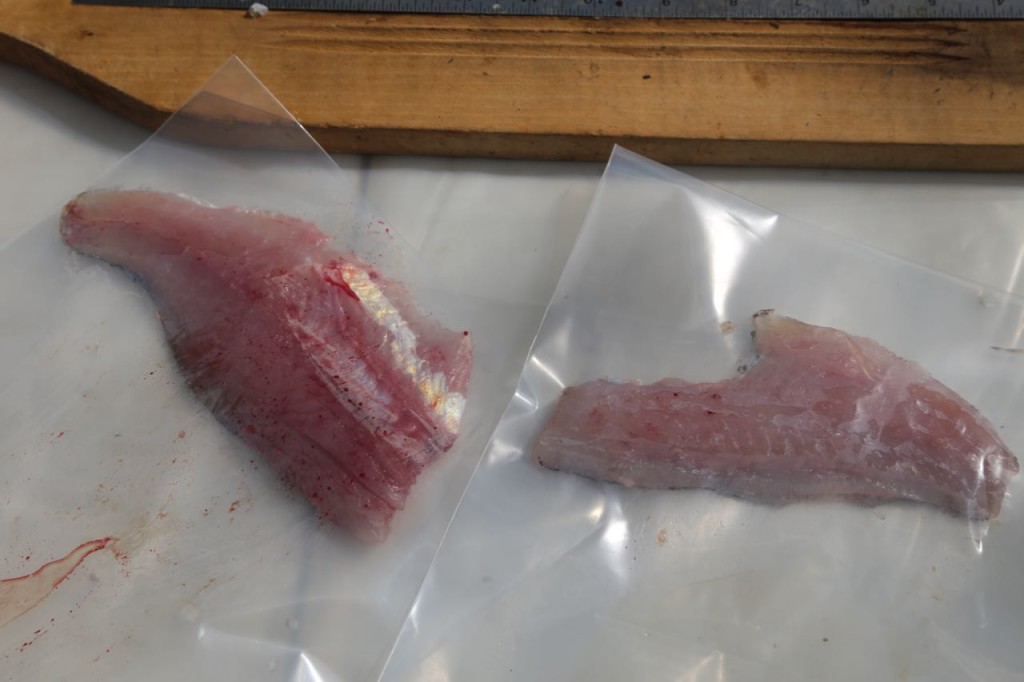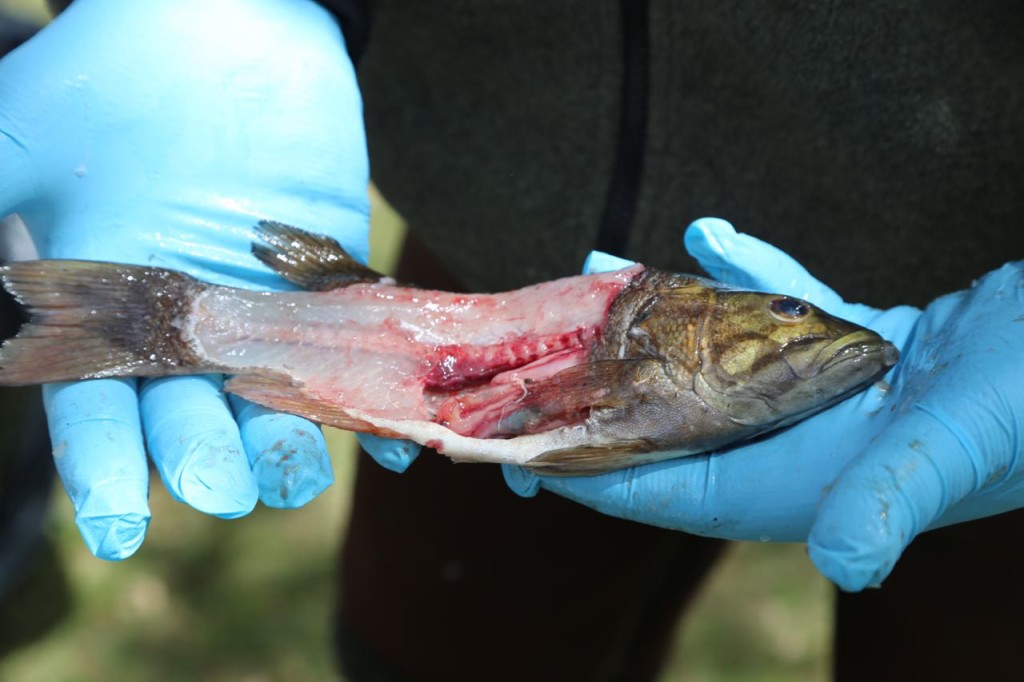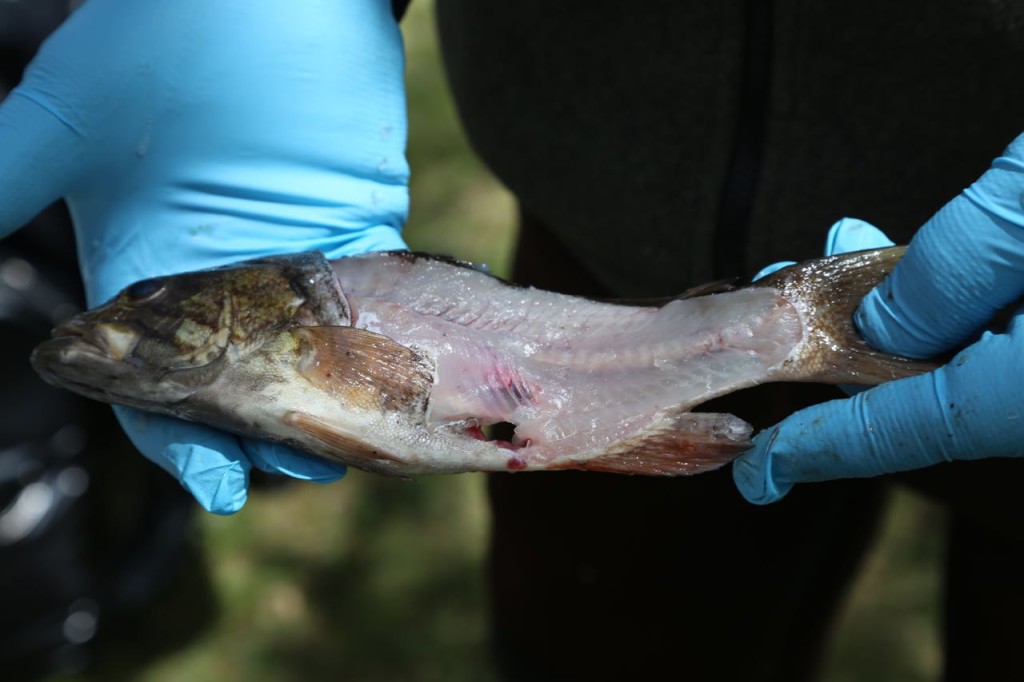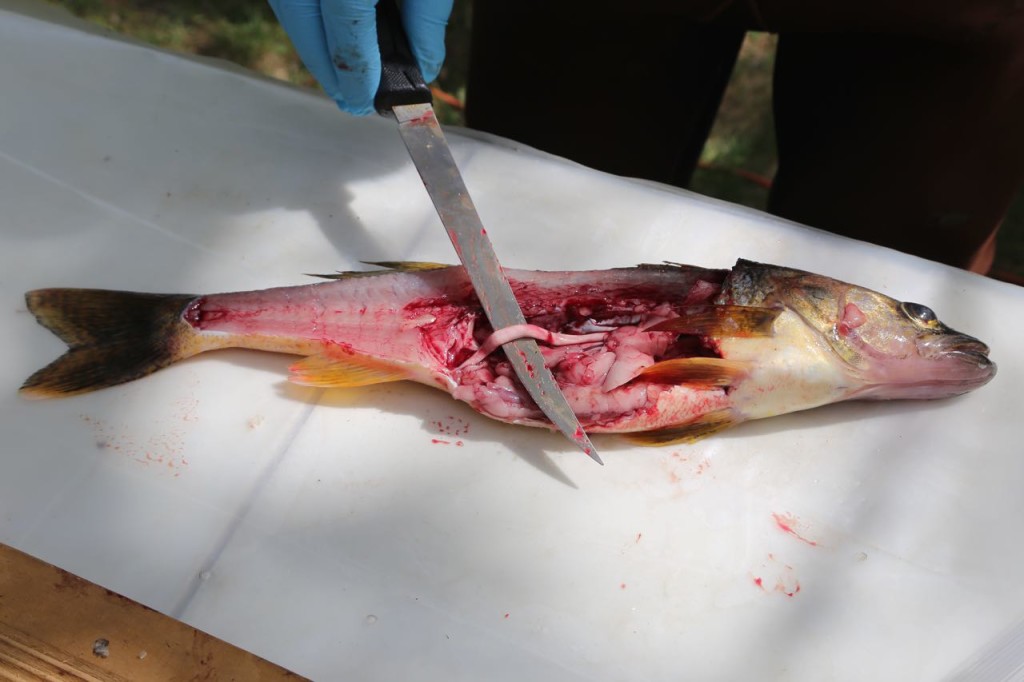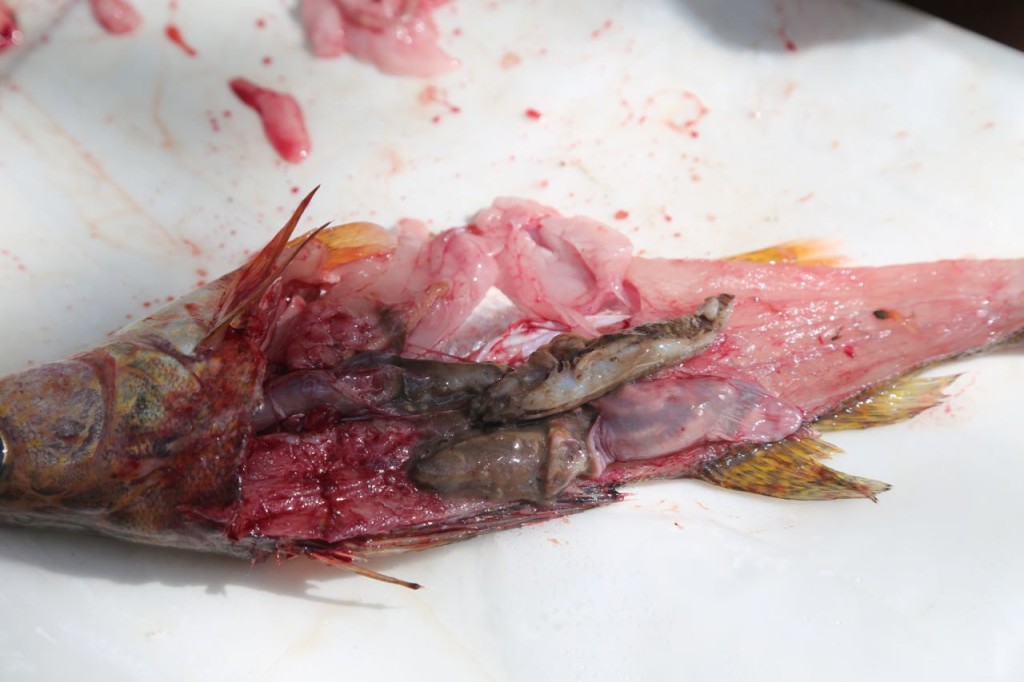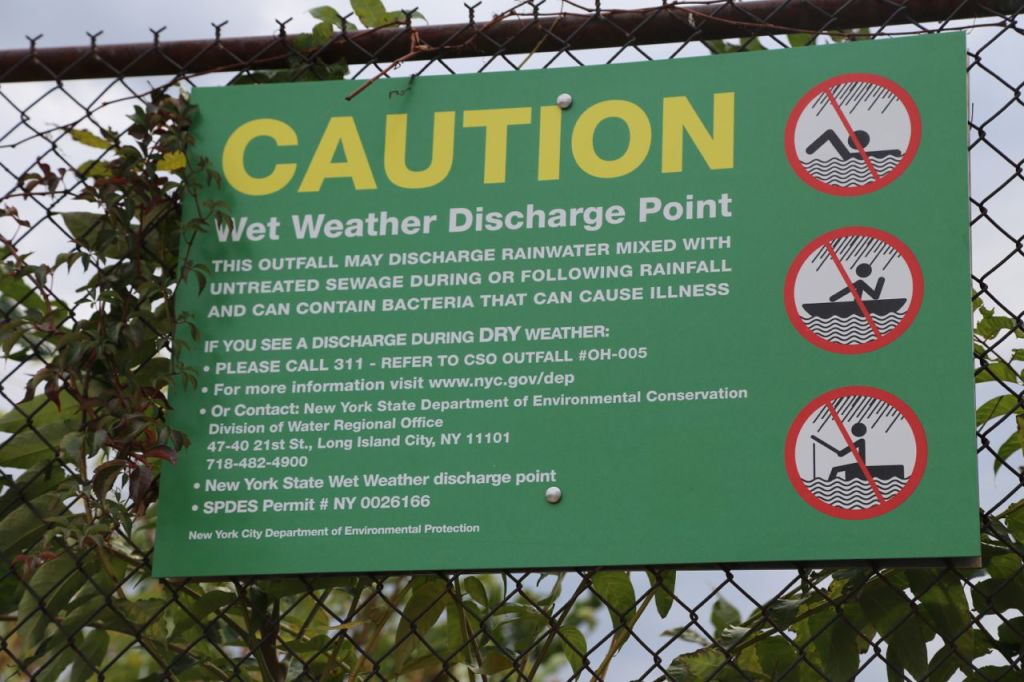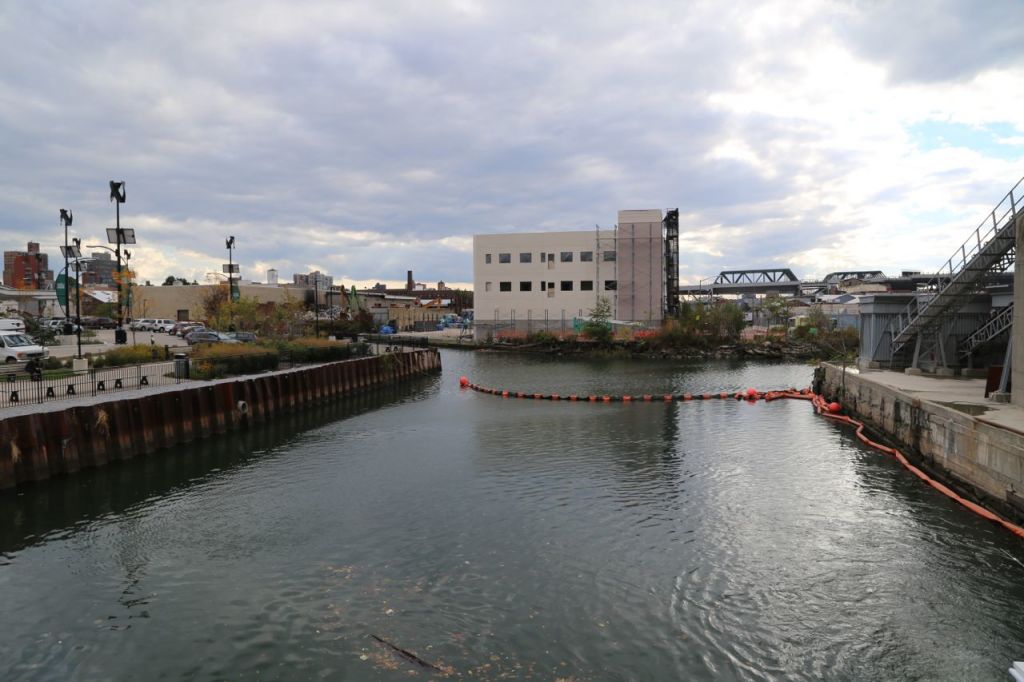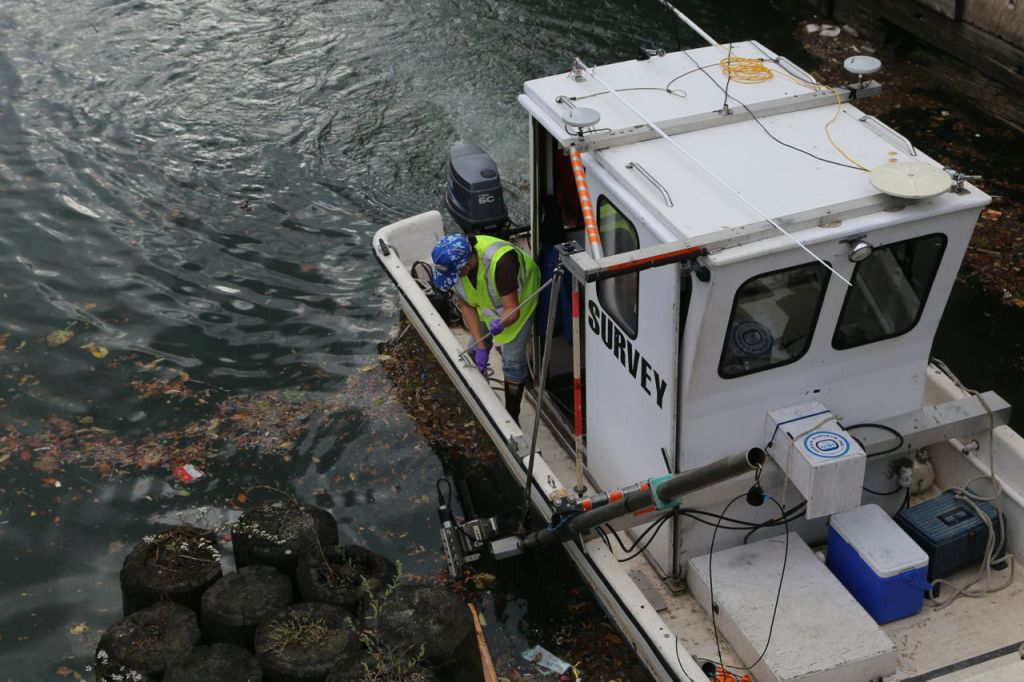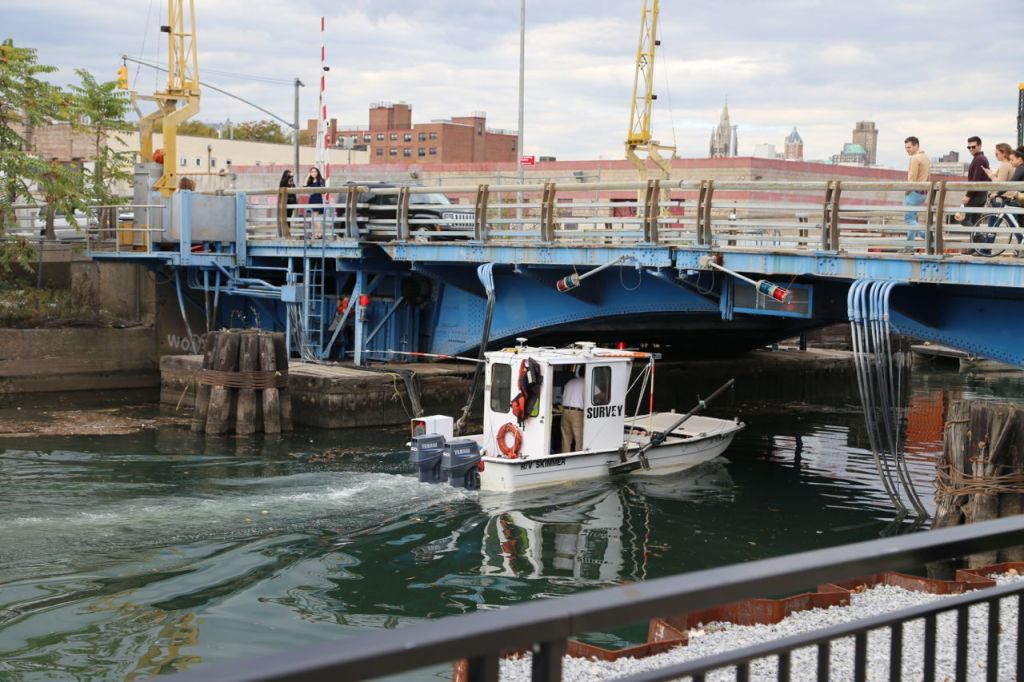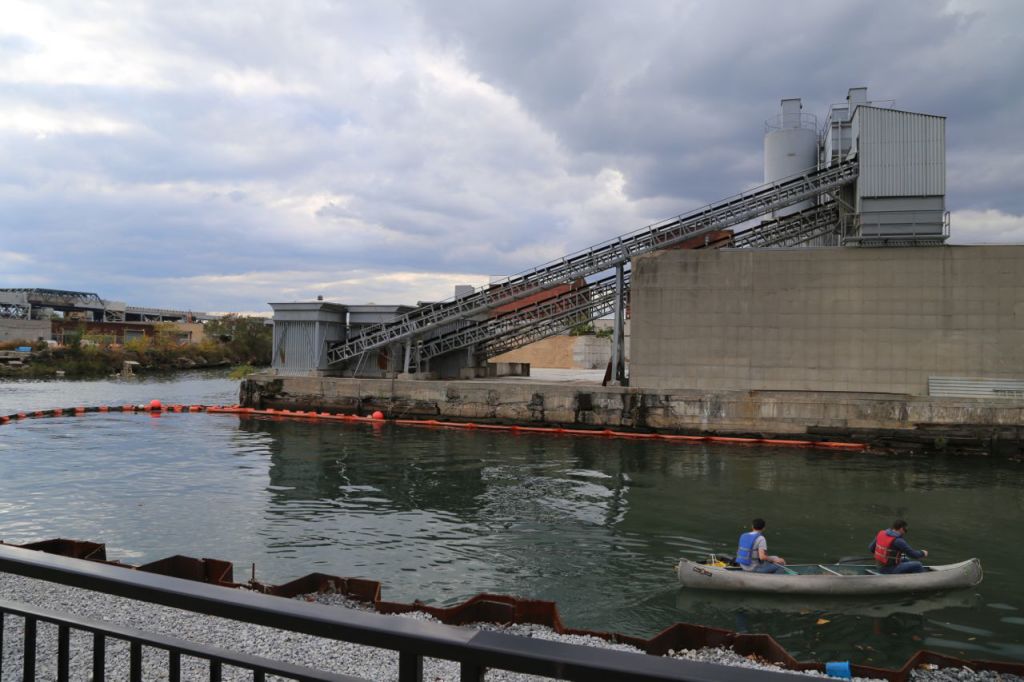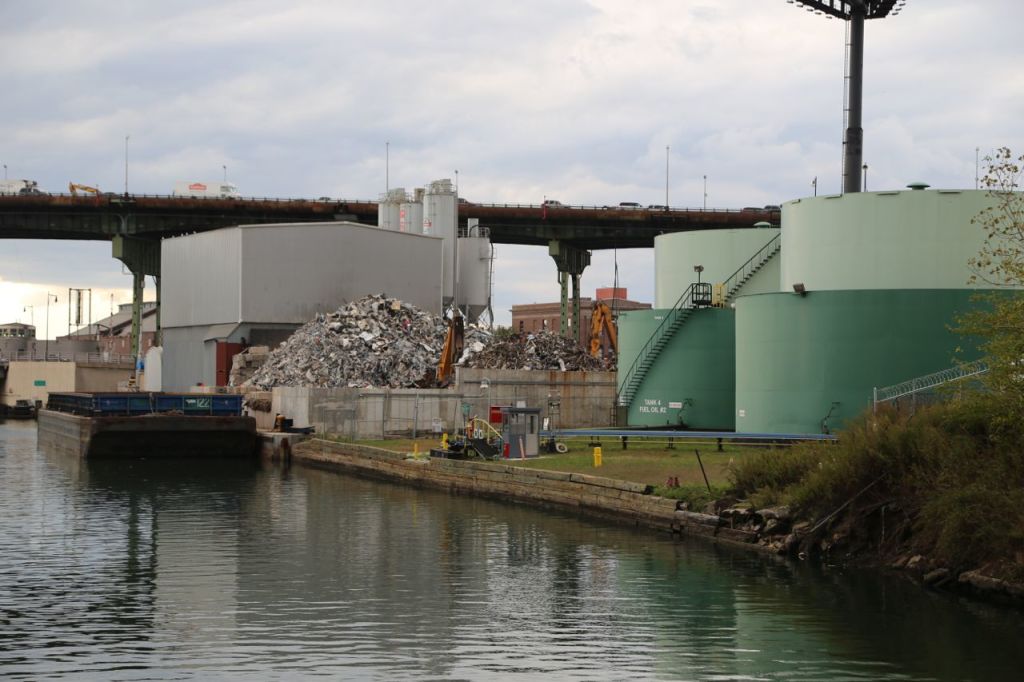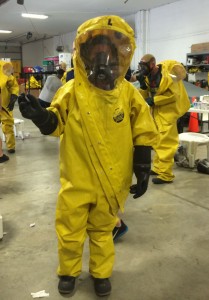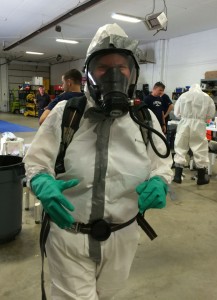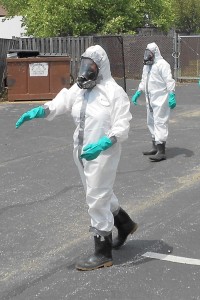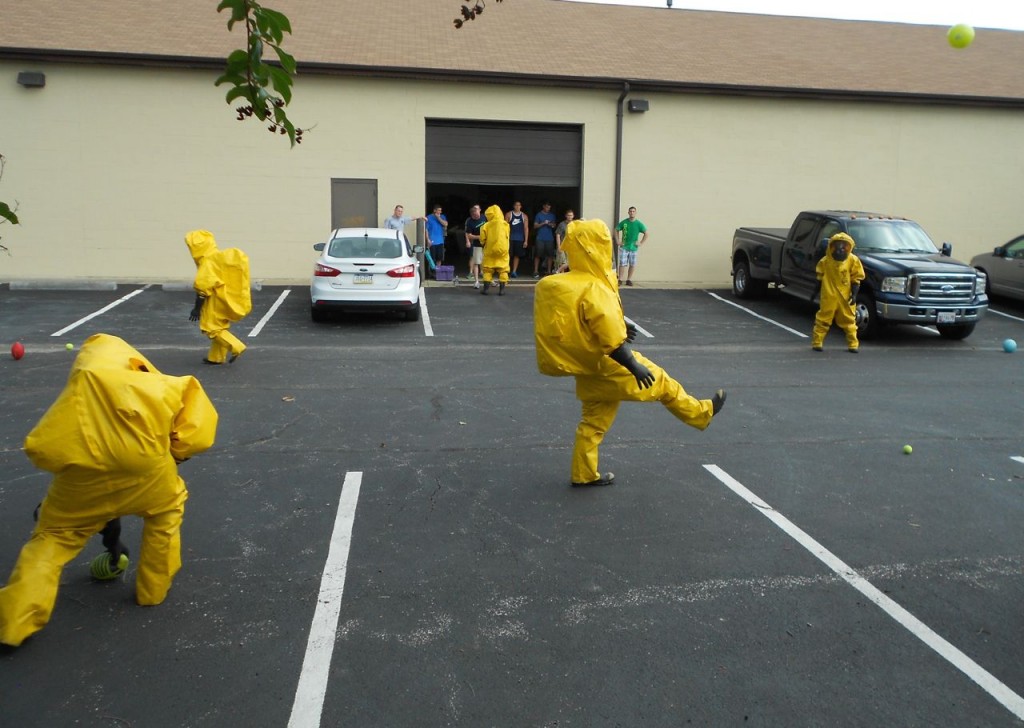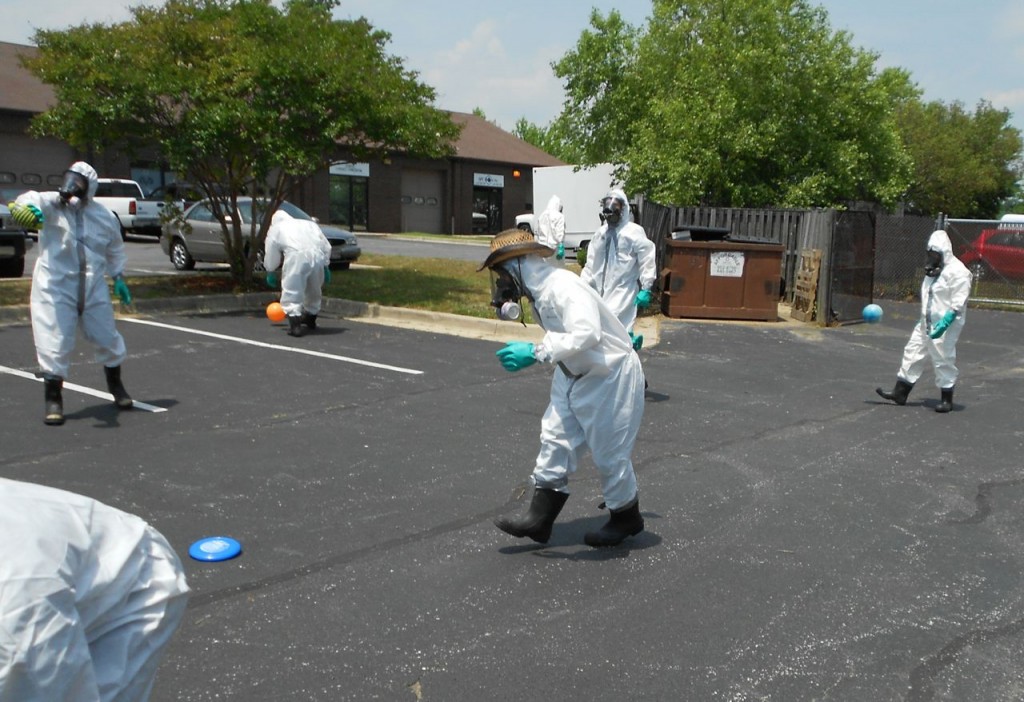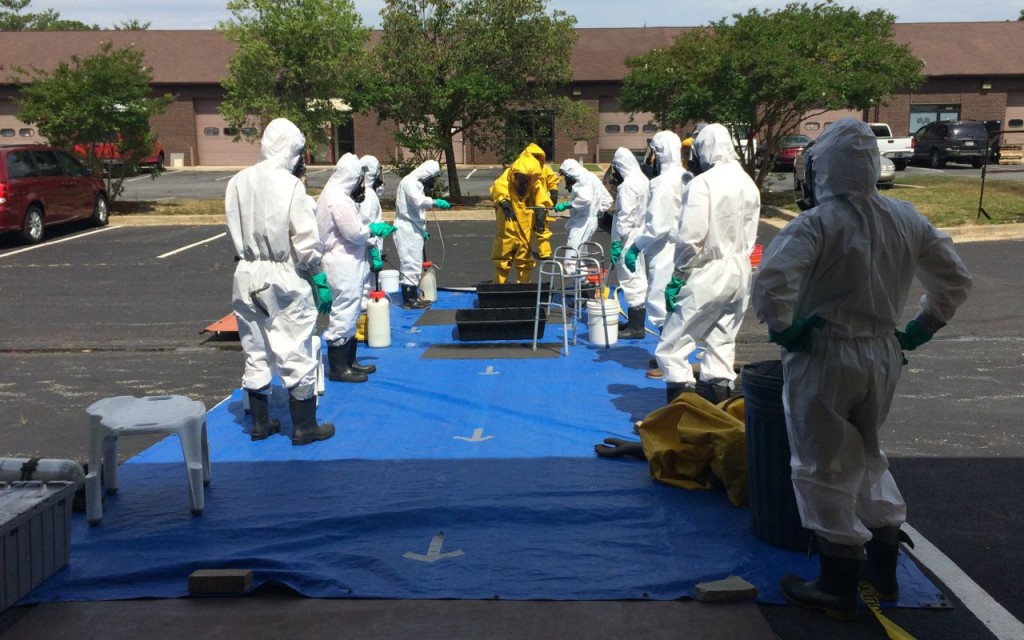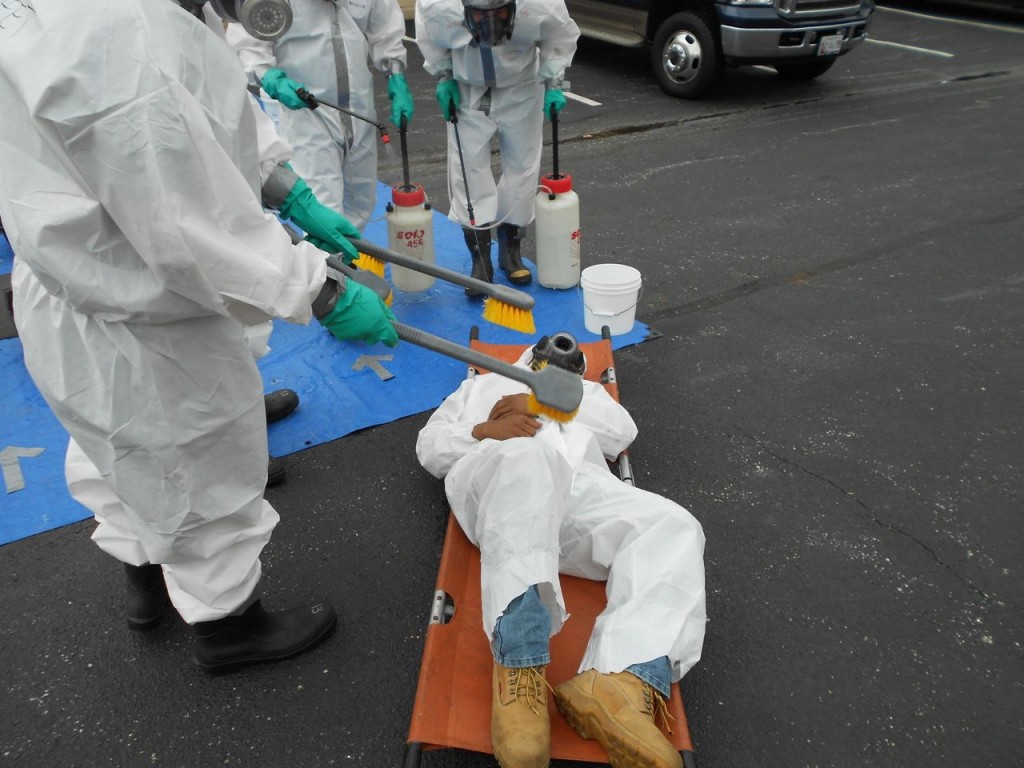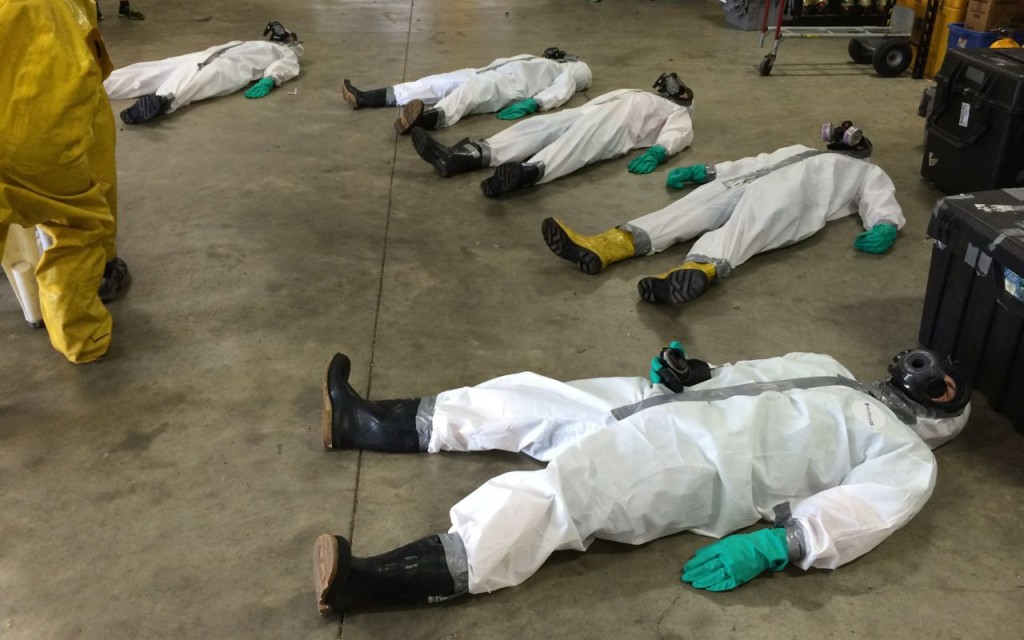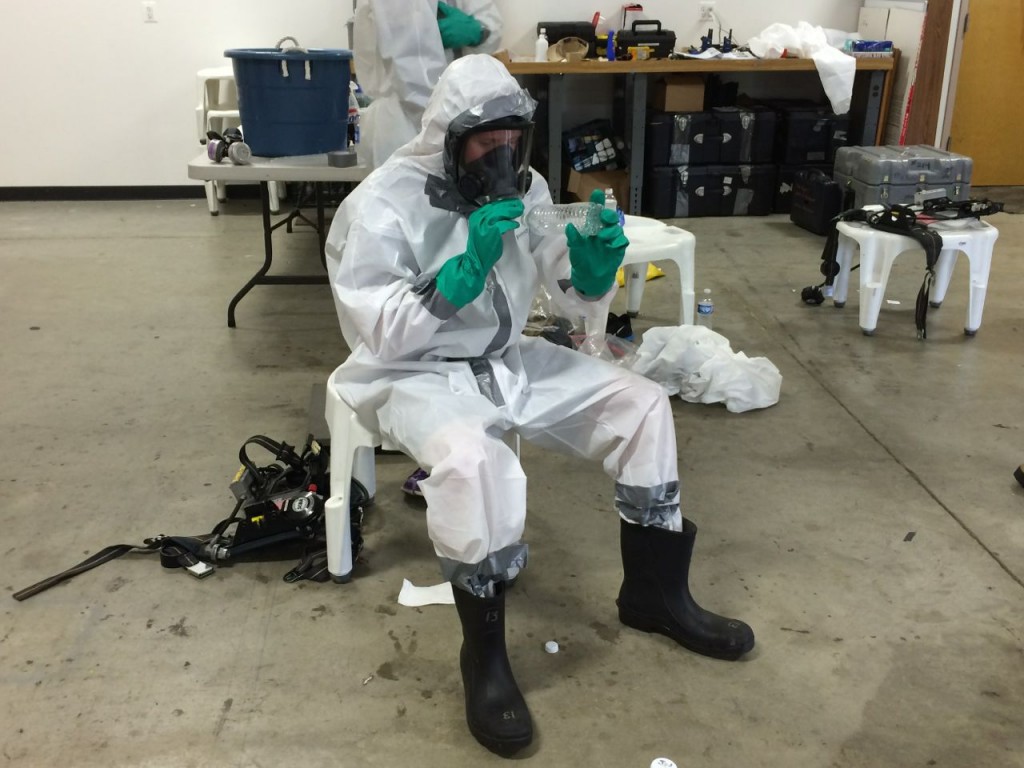Newtown Creek is a natural creek that now resembles more of an industrial waterway and serves as a divider between Brooklyn and Queens in New York. I recently got a boat tour of it through Open House NY with superb guides from Newtown Creek Alliance and was able to see all the industrial facilities that are on it as well as a few places where its natural state is peaking through. Newtown Creek is heavily polluted because of New York City’s combined sanitary wastewater and stormwater system, which has led to untreated wastewater flowing into the creek during heavy rain events, and also industrial pollution, which has led to it being a Superfund site. A trip down Newtown Creek is almost history lesson down NYC’s past with some historic sites still visible like an old Standard Oil building. More modern parts of NYC also lie on the creek, most famously the newly redesigned and rebuilt Newtown Creek Wastewater Treatment Plant and its eight stainless steel digester eggs.
Tag Archives: hazardous materials
Sampling Fish
Recently for work I got to help out in the field taking samples to quantify environmental contamination. Some of the samples we were taking were fish tissue to measure the levels of polychlorinated biphenyls (PCB) in them. The fish live in a river that was contaminated decades ago. The sampling results will be used for fish advisories and also to determine a clean up plan.
Sampling fish starts with the really fun part, which is cruising on a small electrofishing boat. Electroshocking the fish allows you to catch them alive and throw back any fish we didn’t want. We had target fish we were trying to catch to sample, and those were the only ones we kept, and we only the number of target fish we needed. The electroshock sort of stuns the fish but doesn’t kill them. The electrofishing boat has two long poles with anode wires hanging off of them protruding from the front of the boat. There were more wires hanging from the bow of the boat, and those are the cathodes. The electricity flows from the anodes to the cathodes. We stood at the front of the boat in rubber soled boots with nets extended waiting to catch any fish stunned by the electroshocking. Netting electroshocked fish is not actually as easy as it sounds. Some of the fish are more stunned than others, so some fish seem slightly confused but then swim away. Also, some were stunned but at a depth too low or cloudy for us to catch or see. According to the boat’s captain, the water had really low conductivity, which was making it difficult. Since we had target fish we were trying to catch, I, naturally, kept catching fish we didn’t want. I threw a lot of fish back. Still, a day on a boat catching or not catching fish was a wonderful change from the cubical I normally work in. Also, I learned that you really need polarized sunglasses when out on the water.
Once we got the fish to shore, the biologist took over. The fish were weighed and their length measured. He took a a sample of their scales from a standard location, and those scales were going to be used by a laboratory to determine their age. Evidently scales can be used to age fish in the same manner tree rings age trees. WARNING: If you are uncomfortable looking at the insides of fish, do not read any further. You should probably not eat fish also, if you can’t look at an uncooked one.
The rest of the scales were then scraped off. The fish were then cut. Only the fillets were used for sampling. The part of the fish used for sampling can differ depending on what the exposure pathway being examined is. We took two different parts: the filet, which represents what a human would normally eat, and also the fillet with rib meat. The rib meat is normally not eaten, but it would have more PCBs in it, so using it in the sample would represent a worse case scenario for a human consuming fish.
I also learned a bit of fish anatomy during the sampling. The biologist was also sexing the fish.
We weren’t necropsying the fish, but we still got a look inside, including sometimes as to what it had eaten recently.
We sampled quite a few fish, but it was for science and to benefit the community.
WMATA L’Enfant Plaza Fire
Today there was a fire in a WMATA subway tunnel near L’Enfant. The National Transportation Safety Board (NTSB) is now investigating, and I have confidence that they will do a thorough investigation. I have some questions about actions taken right after the smoke was reported that no one, or at least no one in the media I have seen, has asked. The station filled with smoke, and they evacuated it. WMATA stopped running green and yellow trains through L’Enfant. However they kept running blue, orange, and silver trains through, but these trains did not stop at the station, as they normally would. For those not familiar with L’Enfant Plaza Metro Station, orange, blue, and silver lines share the same track on the lower level, and yellow and green share the same track on the upper level. My question is, were they sure it was safe to keep sending the orange, blue, and silver trains through? I am not asking from the standpoint of the fire, because presumably, they traced the location of the smoke enough to know it was not in the lower tunnel. By safe, I mean because of the potential inhalation of smoke in the lower level tunnels. If the station filled with enough smoke that it needed to be evacuated, then how were they sure that smoke would not enter the trains running through it?
A couple of quick points:
- Just because air smells bad doesn’t necessarily mean it is toxic or hazardous, but conversely, just because air smells fine doesn’t mean it is safe.
- Particulate matter in air and/or smoke is in general not something you really want to breath, but there are different levels of toxicity associated with it. That is, some particulate matter is not more than just an irritant. However, the effect particulate matter has on a person is also affected by that person’s health. People with respiratory issues are more susceptible to any effects.
- Exposure to hazardous or toxic materials can cause effects on different time scales. People who were trapped on the WMATA train in the tunnel, would have acute (short-term) effects from breathing the smoke, such as coughing and having trouble breathing. However, they were probably also exposed to chemicals whose effect is not immediate, such as carcinogens.
The questions I have, that I have not heard anyone ask include:
- What is the air exchange rate between the subway trains and the surrounding air? Can the ventilation be turned off manually, so that there was no air exchange between the train and the surrounding air while the trains were near L’Enfant?
- Were there any measurements taken of the air in L’Enfant, particularly on the lower level where the orange, blue, and silver trains were still running through? If so, what were the measurements of? Just measuring particulate matter will not indicate almost nothing about organic compounds or other chemicals in the air.
- How far did the smoke spread?
- Assuming air measurements were taken, did anyone calculate the amount of contaminants that people in the trains would be exposed to while running through the station based on time and air exchange rate?
My educated guess is that no air measurements were taken. There are probably some sensors in place to measure smoke, but depending on how that measurement is taken, it will tell you information about the particulate matter and that is it. I seriously doubt there was initially any sensors that measured organic compounds or any other type of compounds in the air. I have my doubts that any portable system was put in place during the response. The priority would have been evacuating people (as it should have been). It is possible that WMATA had some qualitative data that there was not much smoke on the lower level. That is, someone may have looked at a video screen and decided the air didn’t look bad. However, unless they had actual quantitative data of what was in the air, then visual assessment of air is a really bad way to make assessments on the quality of the air.
The early statements by WMATA and all other sources, like the fire departments involved, was that they did not know the source of the fire, location or cause. Thus they could not have possibly known what was burning and what would be in the air. For example, if wood is burning, you can expect certain chemicals in the air. If rubber is burning, you can expect different chemicals in the air. WMATA probably decided that the air on the lower level didn’t look that bad, and the trains would go through the station quickly enough that very little exposure would occur. They very well may be right, but with no data and no statements about any calculations, they have no way to prove that. Also, did they inform their passengers of this? If I was on a train, and I knew that the train was going to go through, but not stop, at a station that was filling with smoke, I would get off the train. I don’t feel the need to expose myself unnecessarily to hazardous substances, even if in small amounts. I do not like standing near people who are smoking. The second hand smoke may only minimally increase my risk of disease, but I still don’t see the need for that tiny increase. Thus, was WMATA considering passengers’ exposures at all? Furthermore, did they communicate the possibility of exposure to their passengers on the orange/blue/silver lines to allow their passengers to make their own educated decision about staying on the train? My guess is the answer to both those questions is no, and that is another thing to which WMATA should be made to respond.
Gowanus Canal
Last month while in New York, I spent some time walking around Gowanus Canal because I’m an environmental engineer, and I couldn’t resist an opportunity to visit a body of water, infamous for being incredibly polluted. The Gowanus Canal is a Superfund site due to contamination with polycyclic aromatic hydrocarbons (PAHs), volatile organic contaminants (VOCs), polychlorinated biphenyls (PCBs), pesticides, and metals. However, the Gowanus Canal is also polluted with more ordinary pollutants such as bacteria from untreated wastewater from combined sewer overflow outfalls and other urban pollutants from surface runoff (and possibly illegal outfalls). The area residents are understandably pushing to get the canal cleaned up quickly, and the cleanup is a joint effort between the city, state, and federal government. The area around the canal is an interesting mixture of industrial, art galleries, and up and coming residential. It is actually a nice area. There is a Whole Foods Market next to the canal that has a nice little canal walk on the property, which features signs that say “This is the greenest supermarket in New York State. No smoking, please.” I will take them at their word about being the greenest supermarket, as I did notice solar panels and wind turbines in the parking lot. However I still had to laugh at the irony of the sign. On the bright side, the Gowanus Canal is not so polluted that should someone smoke near it, it is not in danger of catching on fire, like the Cuyahoga River did in 1969. While I was walking along the canal, I spotted a small boat with two people who seemed to be monitoring the water and also two people in a canoe. I guess the canal is safe to canoe on, if you just make sure you don’t touch the water to your skin and most definitely don’t let any get into your mouth, nose, eyes, or any other orifices. The canal does not look that polluted. There are areas with floating trash, but there are very few places where I saw a sheen. When I was there it did not smell either, but evidently especially in summer, it can smell. However, it is a good example of how appearance is not a good way to tell if something is polluted. If you want to read more about the Gowanus Canal, this article in Popular Science is pretty interesting.
HAZWOPER Training
Last week I attended 40 hour HAZWOPER training. HAZWOPER, an acronym for Hazardous Waste Operations and Emergency Response Standard, is OSHA mandated training for employees who may potentially be exposed to hazardous substances and who are engaged in cleanup operations or other certain other activities involving hazardous waste. Normally I work in an office, and the closest I come to hazardous materials or waste is sitting at a computer and analyzing data from hazardous waste sites. However, there is a possibility that I may sometimes be asked to go to a site where HAZWOPER training would be necessary, and I had an opportunity to take the training, so I did.
HAZWOPER training includes topics such as basic chemistry, toxicology, biology, radiation, environmental science, analytical sampling, and law and regulations. Truthfully, I could have taught a good portion of the training. It also includes hands on training with some of the sampling methods and instruments that are used in the field. Personally, I think playing with instruments and sampling materials is fun. As part of the training, you are required to get dressed in various personal protective equipment (PPE) that would be required under various circumstances at sites. In general, you look rather ridiculous in the PPE, but of course PPE is not supposed to be fashionable or make you look good, it is supposed to protect you from hazardous materials that could kill you or cause injury or illness. What PPE does not do, is keep you cool. It was in the 90’s °F when we were dressing in the PPE. While the suits protect you from most hazards, ironically they can cause potential health hazards if you over heat. There are different levels of PPE that are used depending on what the potential hazards are. The most protective is Level A, which is a fully encapsulating chemical-protective suit with positive pressure, full face-piece self-contained breathing apparatus (SCBA), inner and out gloves, and boots.
The next level, Level B PPE, is slightly less protective and includes chemical-resistant coveralls instead of the fully encapsulating suit, as well as SCBA, inner and outer gloves, and boots.
The next level, Level C PPE, is less protective still. It includes an air purifying respirator instead of SCBA, but other than that is fairly similar to Level B.
There is one final level, which is Level D PPE, which is minimal protection from physical hazards but does not include respiratory protection. This may sound strange, but if it is hot, Level A is actually easier to wear than B or C. The fully encapsulating suit is roomier, and the compressed air is continually blowing through your mask and then through the suit itself before it exits an exhaust vent. This air flow helps to cool you. In the chemical resistant suit for Level B and C, I just felt like a turkey that had been baked in a cooking bag. Side note, the SCBA tanks we used were made of a composite material and weighed about a third of the weight of the metal SCUBA tanks I have worn before. Also, for as cumbersome as it was to get dressed out in all the PPE, I think it was easier to dress in and walk around in the PPE compared to the SCUBA drysuit I was wearing a month beforehand while SCUBA diving Silfra. Obviously once underwater, the tank weight is negligible, and the drysuit becomes less cumbersome, but above water, they are really difficult to get into and move.
For HAZWOPER training, you don’t just have to get dressed in the different levels, you need to get used to actually moving and doing various tasks in them. Hence, when we first wore them, our tasks were to play with balls, as one would normally do at a hazardous waste site.
Note in the above photo, the person in the center is wearing proper head protection in the form of a straw cowboy hat. No, he actually just being fashionable. Wearing hazardous material PPE is no reason to not be fashionable.
We also did a few exercises to practice tasks at a hazardous materials site, including decontamination. There are set steps and tasks to make sure decontamination is done properly. The first pair of people wash the worker, the second pair wash the worker again, the third set inspect the cleaning, and the fourth set help the worker out of the PPE. Notice the use of walkers for the worker to hold onto while the decontamination team washes the boots. There is no dignity in any of this.
We also practiced emergency decontamination of an incapacitated worker. We actually did not finish this task. This was due to the fact that after they started decontaminating him, someone loudly said, maybe we will have to do mouth to mouth. At that point, the incapacitated worker suddenly regained conscienness and took off running.
Since this was practice and not a real situation, we did a few things you can’t do on a real site. For example, the decontamination team stayed inside when not needed outside and did various things to stay cool. One thing that we did was lay on the concrete floor because the concrete was cooler than the air, and it absorbed some of your body heat. Sure, we looked like casualties at a hazardous waste site, but it worked and helped keep us cooler.
We also took “hits” of the compressed air from the SCBA. The full face masks we wore were interchangeable for either air purifying filters or for the hose from SCBA. In between tasks, we didn’t wear either. However, we would attach the SCBA for short periods of time because the compressed air blowing into your mask helps to cool you.
Another thing that should never be done at a real site was drinking water through the mask via a straw. Actually it might be acceptable to do this, assuming someone with clean hands put the straw in the bottle and then into your mask. It is not acceptable if you are doing this with your gloves.
For as hot as I was while in some of the PPE, I still had fun. I was out of the office, and that in itself was fun. Also, I learned a bit, and that is always fun.
Household Hazardous Waste Disposal
Previously I wrote, or ranted, about stupid smoke detector design, and at the end of the post I mentioned that smoke detectors have a small amount of radioactive material in them, and thus they should be disposed of properly. I didn’t say specifically how because it really depends on where you live. I live in Virginia, and I have since learned that there is no place in Virginia to dispose of them. My county’s website says they have no way to dispose of them and to try to return them to the manufacturer, but if you can’t find any other way to dispose of them, they can be thrown away in the trash. I contacted Kidde, the manufacturer, and they said they will accept them, you just have to mail the smoke detectors to them. The customer service representative I spoke to said just put “for disposal” on the package, and they will take care of them. I actually had a total of three to return because I had the malfunctioning one plus two ones I had originally bought before I had the hardwired ones installed. So last month, I mailed three smoke detectors back to Kidde. It cost me $6.15, but I now have a clear conscience. This may seem a bit much to some people, but I am an environmental engineer. My career has mostly been dedicated to cleaning up and properly taking care of human and hazardous waste. It has also been about dealing with contamination when waste was not taken care of properly, so there is no way I am going to improperly dispose of waste unless it is completely impossible not to do so.
Here is a fun quirk of United States environmental law, my smoke detectors are non-hazardous because they were used in my house. Those same smoke detectors, if used in a commercial or other non-household setting, are hazardous. Hazardous waste in the US is regulated through the Resource Conservation and Recovery Act (RCRA, pronounced rick-ra). Under 40 CFR §261.4(b)(1), “household waste, including household waste that has been collected, transported, stored, treated, disposed, recovered (e.g., refuse-derived fuel) or reused” is considered to be non-hazardous and exempt from RCRA regulation. There are a bunch of reasons why this exemption is in RCRA, but how you treat your legally-not-hazardous, but technically-hazardous, household waste comes down to a bit of just because you can do something, doesn’t mean you should. However, disposal of household waste is also governed by state and local regulations. Just because federal laws allows you to dispose of household hazardous waste in the trash, does not mean your municipality will because they are the ones who actually have to deal with the waste.
Most people know that fluorescent bulbs contain a small amount of mercury, and thus if you ever break one indoors, you should open the windows and leave the room while the mercury volatilizes. It is because of this mercury that most (or possibly all) municipalities and/or waste disposal companies state that fluorescent bulbs should not be put in the trash. The vast majority of trash in the US is sent to landfills and the rest to incinerators, and mercury does not belong in either of these type of disposal facilities. Also, and just as importantly, the bulbs can easily be broken during transfer from your trash can to the truck, while in the truck (especially if it compacts), at the transfer station, at the disposal site, and all the places in between. If it breaks, the workers can be exposed to the mercury, and thus it is not just about protecting the environment but also the workers.
There is more household waste that is technically hazardous. Aerosol cans can become explosive if punctured. Various cleaning, home maintenance, and vehicle fluids routinely used in household are hazardous to the environment. Conversely, both prescription and over-the-counter (and for that matter illicit) unused drugs should be disposed of in a seal container and put in the trash. Putting unused drugs in the trash is far better for the environment than putting them down the drain where they will eventually get into the waterways. Wastewater plants are not designed to remove chemicals like drugs, but that is a post for another day. [I suppose if someone is trying to dispose of their illicit drugs it is most likely because the police are raiding their house, and they are really not thinking about the environment but about jail, but I still don’t want to drink water with trace amounts of cocaine because some druggie upstream of my water treatment plant was trying to evade arrest.]
The point of all this is, think before you toss something in the trash. Spend a little time on your municipalities website, as most now have them, educating yourself on what can and can’t be thrown in the trash and where things that can’t be thrown in the trash can be disposed. While you are at it, educate yourself on what things can and can’t be recycled in your area. There may be a recycling market in your area for something you didn’t even realize.
Biomarkers: What are they and why do we study them?
In my previous post, I stated that as part of the research of which I was involved, we took blood and urine samples from our subjects, i.e. the guys we were studying. These men are exposed to chemicals during the normal course of their workday. [I say men because the all the people in our study were men. We would have happily used women in our study, but the industry we were studying is dominated by male workers, and we did not find any females to participate or who even worked at that type of job.] While the men were exposed to numerous chemicals, we were interested in one specific chemical that is known to cause detrimental health effects. While the subject was working with this chemical, we had a personal air sampling device clipped to his clothing in the shoulder area. This gave us estimate of the amount of chemical that was in his breathing air space. It was important for us to measure the breathing air space to determine exposure because the worker was spraying this chemical, so the chemical concentration would not be uniform in the air around him. As an example, if you are standing in your house, you can presume the air around you is evenly mixed. However, if while standing there, you spray air freshener or something like that, then as you spray and right after you spray, there will be a very high concentration of the air freshener in front of the direction you sprayed it. There will be a lower, but still high concentration right behind the sprayer, presumably this would be where you are, as the spray mixes. The high concentration will quickly spread out, and the freshener will mix in the rest of the room. If the house’s ventilation system is operating at the time, the freshener will mix faster than if the ventilation is currently off. Thus, the air sample that was taken in the breathing air space gave us an estimate of what the worker would have breathed in had he not been wearing a respirator. All the workers wore respirators though. Some wore half-face filter type respirators (similar to what you buy at a hardware store), which generally reduce the chemical concentration in the air breathed in by a factor about ten or so, if they are worn properly. Some workers wore supplied-air respirators, like a firefighter only these were attached to a hose with an outside air supply. This type of respirators generally reduces the chemical concentration in air breathed in by a factor of 1000. Therefore, we got an estimate of what the worker was exposed to in the air but not of the amount that made it into the lungs.
After the subject worked with the chemical, we applied and quickly removed tape strips (medical tape) to his arms, wrists, hands, and neck to determine the amount of the chemical that made it onto his skin in those areas. The medical tape removed the very top layer of epidermis and any chemical that was in that layer. Basically it was like we applied and then removed a band-aid without the gauze section. Thus, the tape strip gave us an estimate of how much chemical made it on to his skin, but it couldn’t tell us how much of the chemical actually made it through the layers of the skin and into the blood stream. Previous research had indicated that it was possible for this chemical to be absorbed through the skin. Despite what some people might think, skin is not impervious to chemicals. If it was, the nicotine patch and the estrogen patch wouldn’t work.
To summarize, we could estimate what the worker was exposed to via inhalation and dermal exposure, but we didn’t know what he actually absorbed or what made it into his body. That is where biomarkers can be useful. Biomarkers are measurements of a chemical or some other tell-tale sign of exposure in some biological sample. They can be measured in the blood, urine, fecal matter, exhaled breath, and many other bodily fluids or materials. Some materials are used more frequently because they are a lot easier to get. It is much easier to get someone to agree to urinate in a cup then to let you do a spinal tap for spinal fluid. Which bodily material is used also depends on what the chemical of interest is. If you are looking for a volatile chemical, the exhaled breath might be used. To get the exhaled breath, the person simply exhales into a specially designed glass tube. Similarly, a suspected drunk driver who has just been pulled over by the police, may be asked to breath into a breathalyzer. The concentration of the alcohol, or chemical, in that air can then be measured. This is a biomarker. If the chemical or its metabolite is excreted quickly, then it would be more useful to study the urine than the blood because there would probably be higher concentrations in the urine than the blood. However, the concentration in the urine is generally more representative of short term exposure, while the blood is more representative of long-term exposure.
The metabolism of the chemical is very important because it indicates what chemical you are actually looking for in the body and also where to look for it. For example, when a person is exposed to lead, it does not change into another chemical because lead is an element. Thus, blood lead level is a biomarker used to indicate exposure to lead. A person’s intoxication level can be measured by exhaled breath as stated. A suspected intoxicated person can also have a blood sample withdrawn, and the amount of alcohol in the blood can be measured. It is called the blood alcohol content, and it a biomarker of alcohol exposure. The body metabolizes alcohol and uses it for fuel, so looking for it in the urine is not all that useful, or least not for the police. Alcohol in the urine is more indicative of consumption hours beforehand (i.e. it doesn’t tell the police how drunk the person is at that moment, crucial for legal reasons), and it is not completely accurate because the rate and amount that a person metabolizes alcohol differs from another person. Like alcohol, many other chemicals that people are exposed to, are metabolized or partially metabolized by the body. Unlike alcohol, if it is a chemical that the body does not need and can’t use for nutrition, then the body will generally try to get rid of it as quickly as possible, if it can. The chemical we were studying in our research was like this. The body has no use for it, so it is partially metabolized and excreted. Thus we looked for the metabolite, not the chemical itself, in the urine or blood. To what degree a chemical or metabolite can be found in the urine versus the blood versus some other bodily fluid or tissue depends on the physical and chemical properties of the chemical or its metabolite. The metabolism, storage, and excretion pathway in the body of different chemicals is the subject of fascinating research and possibly another blog post.
Shipping Human Specimens
This morning I read an article in the Chicago Sun-Times concerning 17 human heads that had been discovered at Chicago O’Hare Airport. The best part of the headline is that it said “no foul play suspected.” This article has now been updated to state that “‘They were properly preserved and tagged as human specimens,’ said Tony Brucci, chief investigator for the medical examiner’s office” and that according to U.S. Department of Homeland Security, “the specimens appear to be legitimate medical samples.” The original version of the article, which I can no longer find, did not have all these details. It just said 17 human heads had been discovered, transported to the medical examiner’s office, and no foul play was suspected. This of course, sent most people’s imaginations wild as to how 17 human heads could end up at an airport without foul play. Perhaps this is a new way to save on air fair, just send a head, not the whole body.
The shipment of human heads, legitimately or otherwise, made me think of my human specimen shipping adventures while in graduate school. The field work that my fellow graduate students and I performed included three one-month trips to Seattle. Everyday we would drive to a different location to sample at the type of workplace we were studying. Among the samples we collected were blood and urine. For the vast majority of blood analysis, including the ones we were doing, the blood has to be separated into the red blood cell fraction and plasma section before it can be frozen. We were actually isolating the white blood cells also. To separate blood into these fractions, the blood has to be separated within 24 hours of being drawn, in truth, the sooner the better. Therefore, every night after sampling, we would ship the samples overnight to the east coast where our university was located. This may surprise some people, but this is actually not that big of a deal. Another grad student and I became certified hazardous materials shippers to do everything properly. In the case of our biological samples, the blood and urine, they could be shipped as “exempt human specimens.” This is specific term for shipping that meant our samples were not infectious and only required certain precautions to ship. Unless a person has a urinary tract infection, urine is sterile. Blood of course can carry many infectious agents, but if a person can be reasonably believed to be healthy and free of a blood-borne infection, then the blood can also be assumed to be non-infectious, and the blood can be shipped as an exempt human specimen.
Therefore every night after sampling, we would put the blood and urine samples with ice packs in a styrofoam container that was within a cardboard box. The cardboard box was clearly labeled “EXEMPT HUMAN SPECIMENS” as per shipping rules. We would then ship via FedEx, or if we couldn’t make it to the FedEx drop off before the overnight cut off for east of the Rockies (FedEx had an hour later drop off for west of the Rockies, presumably those went to a different sorting center), then we would drive to SeaTac airport and ship via cargo on a passenger aircraft. Shipping cargo on a passenger aircraft was an adventure. This was post 9/11, and they had started to implement more security measures for cargo. I don’t fully know what the security measures were then or today, but let’s just say, I don’t have a lot of faith in the security of cargo. In any event, the first time I dropped a box off at the passenger airline, which I won’t be naming, after going through a whole lot of paperwork, the employee took the package which had already been sealed. He asked if he could open it to examine the contents for security reasons. As he had no gloves on, I said, of course you can examine it, but to avoid contamination of my samples and for your own safety, please put on latex or nitrile gloves. He stopped and stared at me and asked why. Another employee who was working on the paperwork stopped what he was doing, looked at the first employee, and then the second employee and I at about the same time, said because the package contains human specimens, as it states on the outside, and as all the paperwork states. The first employee then said “oh” and looked a little embarrassed and took the package to the back, hopefully to be x-rayed or something. I say hopefully because as someone who flies, I am hopeful but not confident all cargo gets x-rayed. The fact that the employee was going to open a package without reading or noticing the large letters on the outside that said “EXEMPT HUMAN SPECIMENS” made me rather wonder how much they check things they accept and how much their employees might endanger themselves by not paying attention. Things were much easier when we could make it to FedEx, and they ship thousands (millions?) of these types of packages everyday. [This is not a plug or advertisement for them.]
The packages’ return trip was also made me wonder how much people question or don’t question things. After our fellow grad students back at the lab had received a week’s worth of packages or so, they would put the thawed ice packs back in the styrofoam, close everything up, and ship them back to us via FedEx ground, so we could reuse the boxes. The first time they shipped boxes back, they didn’t bother to remove the taped labels that said “EXEMPT HUMAN SPECIMENS”. I thought I had told them to do this, or perhaps I just assumed they would. I don’t know if there is anything legally or technically wrong with shipping boxes labeled as exempt human specimens that don’t actually contain human specimens or anything else for that matter. However, as we were shipping them back via ground to save money, and it took five days to get from our university to Seattle, I would think it would be better to remove the labels so that no one at FedEx questioned why or what kind of specimens would not go bad over the course of five days. Because the label said “exempt”, it should not change the shipment method, but packages shouldn’t be labeled as something more dangerous than they are. There are some types of dangerous goods that can’t be shipped via ground because it takes too long or it would affect the route (think of all those freeways and roads that say “no hazardous cargo”). Conversely there are some dangerous goods that can’t go in an airplane. However, I guess I worry too much because the packages arrived at our hotel without any problems or questions from FedEx. I guess FedEx was not concerned with five day ground shipment of exempt human specimens, whatever they might be.
I’m not entirely sure what the hotel employees thought of us, but they must have wondered. We were there for an entire month, and the people at reception certainly knew me if only because we were rather unusual guests. We had a small freezer in our room to store our non-biological samples before shipping them back to the lab. We had stacks of empty boxes labeled “EXEMPT HUMAN SPECIMENS” and other boxes labeled for the chemicals we shipped. My room had boxes of urine and blood sample collection supplies. Another room had a bunch of charging personal air sample pumps and their calibration machine. No, we were not normal hotel guests. They knew me at reception because I was always picking up packages, including our returned “exempt human specimens” boxes. First time I came to pick up the returned packages, they had them stacked up in the front office. One employee timidly asked if I would mind telling him what was in the boxes. The boxes were about 18 inches wide by 12 inches deep by 18 inches or so. I explained that they were currently empty and what we were using them for. He started laughing and seemed relieved but almost disappointed. Evidently they had spent the day guessing what was in them. The winner had been human heads. I wasn’t sure how to respond to that. However they didn’t call the police or kick us out of the hotel, so I guess they thought we and our credit cards were trustworthy enough that what we were shipping was legitimate and safe. Still, it makes me wonder how much people pay attention to things and question what they see.

